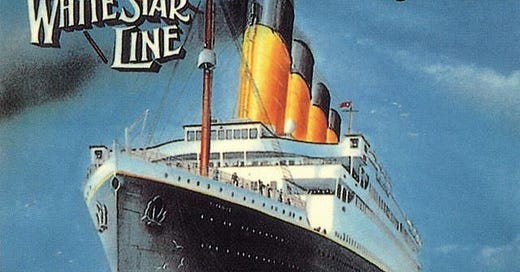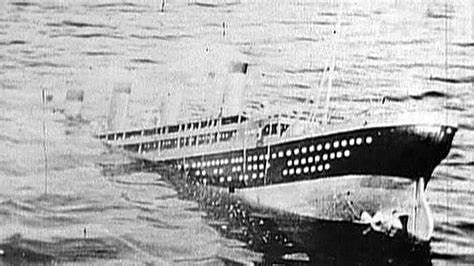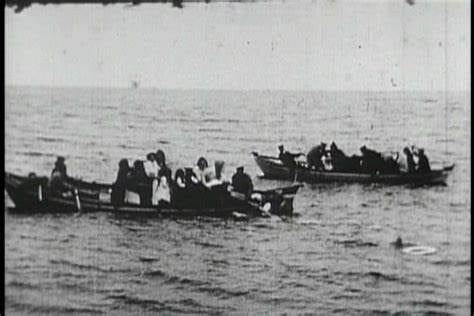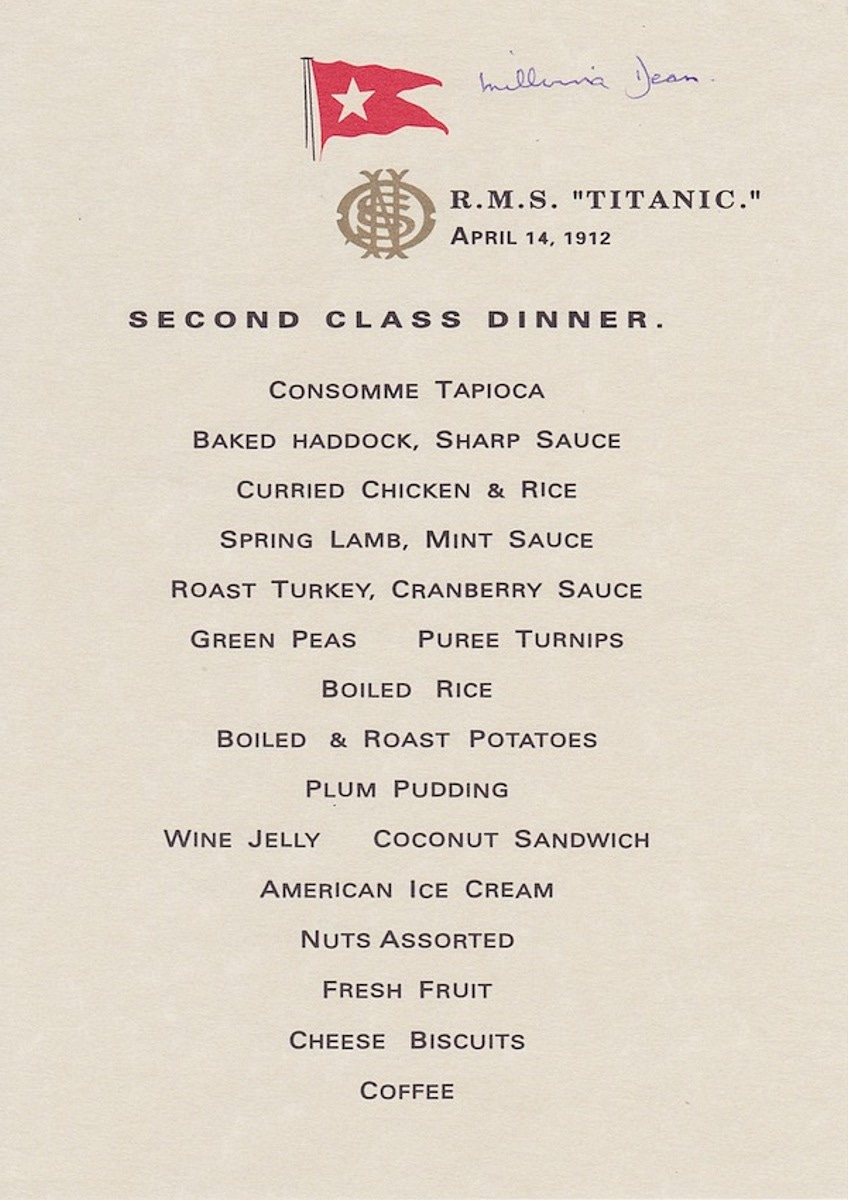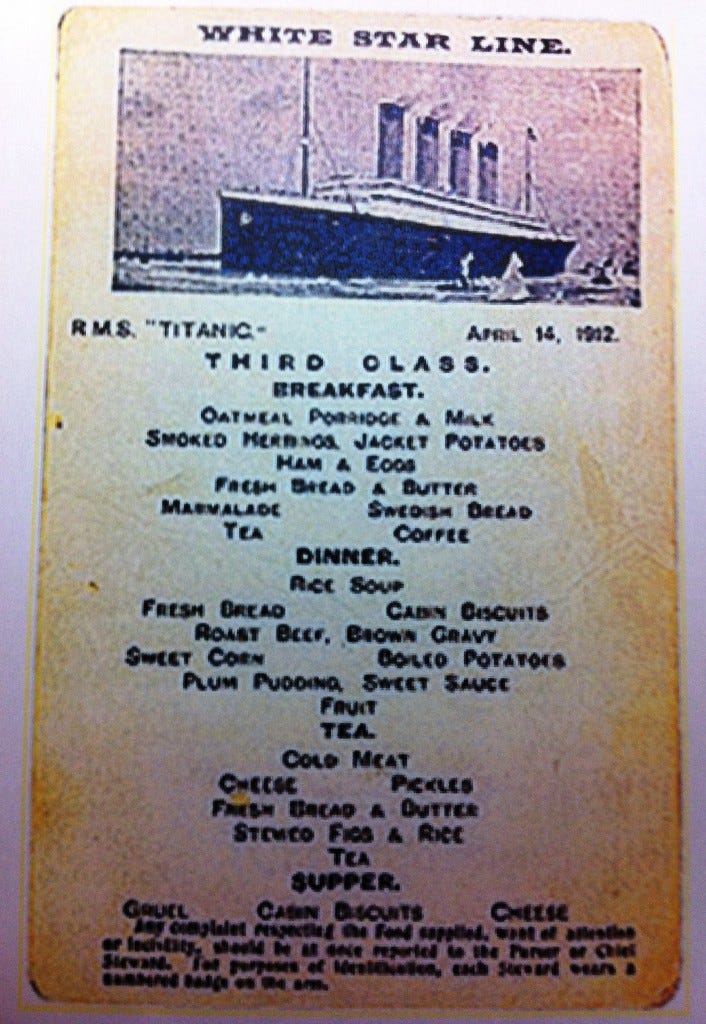The first film version of the TITANIC story: In Night and Ice ("In Nacht und Eis")
Only a few months after the sinking of the Titanic, an epic 40-minute recreation of the disaster was produced in Germany by 24-year-old Romanian director Mime Misu.
The film was produced by Continental-Kunstfilm of Berlin, and while most of its footage was shot in a glasshouse studio in the rear courtyard of the offices at 123 Chausseestrasse, some footage was shot in Hamburg, and some was possibly done aboard the German ocean liner SS Kaiserin Auguste Victoria, then docked at Hamburg. The Café Parisien scenes were filmed in the vessel's Winter Garden. The Berlin Fire Department provided water to use for the sinking scenes.
With a running time of 35 minutes, In Nacht und Eis was three times longer than the average film of 1912. Shot in black and white, various scenes were tinted to heighten their impact, such as night scenes in dark blue and a shot of a stoker feeding a burner in red.
In one scene, a title card reads: Der kleine Milliardenerbe, welcher mit seinem Kindermädchen gerettet wurde, weil sich die ganze Familie opferte, um den Namen zu erhalten which translates to "The little inheritor of billions, who was rescued by his nanny to preserve the [family] name, since the whole family sacrificed themselves." This related to the true story of the Allison family which were traveling in First Class, whose baby Trevor escaped the Titanic with his nanny Alice, while his family perished in the sinking.
The film was presumed lost until February 1998, when the German film archivist Horst Lange, after seeing a newspaper article mentioning the disappearance of In Nacht und Eis, informed the paper that he possessed a print of the film.
Only a few months after the sinking of the Titanic, an epic 40-minute recreation of the disaster was produced in Germany by 24-year-old Romanian director Mime Misu, entitled "In Nacht und Eis" or "In Night and Ice". It is the earliest surviving Titanic film, which has now been remastered, translated into English and re-released with a new score by Swiss composer Christophe Sturzenegger:
Music is what carried the news of the day and music captured the Titanic tragedy:
The song was popular- in the Black community! In fact it was written and performed by blacks. Why? In the Black community there was an irony whites didn’t see. No blacks were allowed on the ship. The people making the food for the passengers- were all white. That’s 80 people! They were not allowed as passengers or crew. Some felt the sinking was a sign from God that segregation was wrong!
The song was so popular it was still being performed into the 1960’s, most likely by whites who didn’t know the anti- segregationist origin of the song:
The last meals on the Titanic:
Second Class Menu:
Third Class Menu:
Titanic Newsreel Compilation:
The Last Seven Survivors tell their amazing stories of how they escaped death. At 2 o'clock in the morning on April 15, 1912 the "The Unsinkable Titanic" sunk. All have since passed away, so you are hearing and seeing them together for the last time. The Titanic - the British passenger liner that sank in the North Atlantic Ocean on April 15, 1912, after colliding with an iceberg during her maiden voyage from Southampton, England to New Your City. 1,514 people that drowned in the deadliest peacetime maritime disaster in history. Her passengers included some of the wealthiest people in the world, as well as over one thousand immigrants from Great Britain, Ireland, Scandinavia, and elsewhere seeking a new life in America:
TITANIC THE FINAL VOYAGE documentary:
I would like to thank our subscribers for your support and urge readers to become paid subscribers. Please feel free to repost the pages you like, and each one teach one. Share the movies you like, have friends and family over to watch a silent. AI is coming, and while I love how it will make everything immersive, I also know we as Americans have a tendency to drop the old for the new. My fear is AI will be so overwhelming that everything before it will be dropped, the way silents were tossed to the side when sound came in, or black and white films fell out of favor when color came in. In the beginning we will see studios using AI to enhance older films, but what they fear is not what they should be worried about- scripts and stars images being used. What is coming is a writer being able to create a movie as they write and distribute it without any help from any studio.
Every year I notice that Best Movies Ever Made lists, have fewer and fewer silent films. That isn’t fair and it isn’t right. But no one ever said life was fair. If you can become a paid subscriber, thank you for your support. If you can’t, don’t let that stop you from spreading the word. There is magic in silent films, and CLASSICS OF THE SILENT SCREEN can prove it. Thankyou.
Behind the paywall: The Full Story of the Eastland Disaster (1915)- The WORST Shipwreck in the US with a HORRIFIC Ending
It was second only to the Titanic, but what is shocking was that it happened on a Chicago river that was just feet from the shore!
Keep reading with a 7-day free trial
Subscribe to Classics Of The Silent Screen to keep reading this post and get 7 days of free access to the full post archives.

